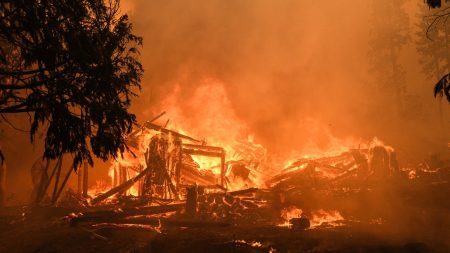Key takeaways
- HO-3 insurance is the most common type of home insurance policy.
- Standard HO-3 policies provide coverage for your home’s structure, contents, liability, medical payments and additional living expenses.
- Standard HO-3 policies exclude damage from flooding and earthquakes, but coverage may be available through endorsements or standalone policies.
A house is more than just the place where you live. There is an emotional connection to a house that makes it a home. It’s a place where you have invested your time, effort and money to make a safe and comfortable environment for you and your family. To financially protect this investment, most experts recommend purchasing homeowners insurance. An HO-3 policy is the most common type of home insurance, but it’s not the right fit for every situation. Bankrate’s insurance experts explain.
What is HO-3 insurance?
HO-3 stands for “homeowners form 3” in insurance. This type of homeowners policy is the most common; it is available through almost every private property insurance company. At a high level, HO-3 insurance policies provide coverage for your home, your personal belongings and your liability as a homeowner.
These policies are primarily available for single-family homes. However, some multifamily homes and townhouses may need this type of coverage, as well. To qualify for an HO-3 policy, the homeowner must reside in the dwelling as their primary residence and need to insure the entire structure, including the roof.
While HO-3 policies insure your home and belongings, they are covered in different ways. The home and other structures on the property are typically covered on an open-perils (or all-risk) basis. Open perils means you’re covered for all damaging events unless specifically excluded. Belongings, however, are covered on a named-perils basis. Named perils coverage only covers damage related to the losses listed (or named) in your policy.
HO-3 insurance at a glance
HO-3 insurance policies are ideal for homeowners who need to cover the entire structure of their home and its contents.
| HO-3 details | What to know |
|---|---|
| Coverage | HO-3 policies cover the structure of the home, other structures on the property, personal belongings, loss of use expenses and personal liability as a homeowner |
| Cost | The average cost of an HO-3 policy with $300K in dwelling coverage is $2,304 per year |
| Who might need it | Owners of primary residences |
| May not be right for | Owners of condos or townhouses, landlords, vacant homes, renters |
What does an HO-3 policy cover?
Typically, HO-3 insurance policies contain six coverage types common among most homeowners insurance policy forms. For dwelling and other structures coverage, claims are paid at replacement cost value up to the policy’s limits — meaning depreciation is not a factor in your claims payout after a loss. The policy limits for several of the other coverage types included in an HO-3 policy are generally based on a certain percentage of the dwelling coverage. For example, if a dwelling is insured for $200,000, the other structures coverage is usually covered up to $20,000 or 10 percent of the dwelling coverage.
The predetermined coverage amount can vary between insurance providers, and endorsements may be available to increase the coverage limits if desired. Coverage types provided in an HO-3 policy are as follows:
- Dwelling coverage: Dwelling coverage covers repairs for your home’s structure and any attached structures, like a porch or garage. Insurance agents can determine your home’s insurable value with the help of a replacement cost calculator when you set up your homeowners insurance policy.
- Other structures coverage: Any detached structures like garages, driveways, sheds and fences are typically covered under other structures coverage. The typical policy limit is 10 percent of the dwelling coverage, but you may be able to adjust this amount depending on your insurance carrier.
- Personal property coverage: Personal property coverage helps cover damage to your personal items, such as clothing and furniture. The policy limit for personal property is usually between 50 and 70 percent of the dwelling coverage.
- Liability coverage: Personal liability coverage provides financial protection if you or a household family member are found negligent for bodily injury or property damage caused to others. Most claims are due to losses incurred on the insured property, but there are situations where the liability coverage can extend past your home’s premises.
- Guest medical payments coverage: Medical payments coverage will help pay for a guest’s medical expenses if they get injured at your home. The homeowner does not need to be negligent to utilize medical payments coverage.
- Additional living expenses: Additional living expenses help pay for your hotel, food, laundry and other expenses if a covered peril damages your home and you have to temporarily relocate. The limit for this coverage is usually between 20 to 30 percent.
Remember that HO-3 insurance covers your personal property, or your home’s contents, on a named-perils basis. That means your personal items are only covered if the loss stems from specific perils that are listed in your policy. There are typically 16 named perils. The following are the most common:
- Fire
- Windstorms
- Accidental water damage
- Theft
- Weight from ice and snow
- Vandalism
- Explosions
- Freezing pipes
Another thing to know about personal property coverage is that it typically pays out claims after factoring in depreciation. This type of coverage is called actual cash value or ACV, not replacement cost. If you are interested in replacement cost value or RCV for your personal belongings, such as clothing, furniture and appliances, talk to your agent about adding a personal property replacement cost endorsement to your HO-3 policy. This is optional with most insurance companies and can add about 10 percent to the policy premium.
HO-3 policy exclusions
Despite the fact that HO-3 insurance covers your home on an open-perils basis, it does not cover everything. In fact, some common exclusions are:
- Earthquakes
- Floods
- Sinkholes
- Sewer backup
- Government intervention
- Wear and tear
- Damage due to lack of maintenance
- Rodent or pest infestation
- Rust, mold and corrosion
- Damage from pets
Depending on where you live, you may want to purchase additional coverage to supplement your HO-3 policy. For instance, if you live in California, consider purchasing earthquake insurance. Or if you live in an area that is prone to hurricanes, like Florida or Louisiana, having a separate flood insurance policy might save you a lot of out-of-pocket costs.
Who needs HO-3 coverage?
Unlike auto insurance, homeowners insurance is not mandatory in any state. But if you have a mortgage, your lender will probably require you to have it to protect the financial institution’s investment in your home. Even if you own your home outright, HO-3 coverage can be worthwhile in the event a fire or other covered natural disaster causes significant damage to your home.
HO-3 insurance policies are ideal for the average homeowner with a dwelling type that qualifies for the policy. The vast majority of U.S. homeowners have this type of insurance. You can usually add endorsement options to your HO-3 insurance if you need broader coverage or higher policy limits.
However, there are other types of home insurance. If you live in a new home, somewhere that has a low risk of natural disasters and crime, you might qualify for an HO-5 policy. If you live in an older home, especially one that is historic or architecturally significant, you can purchase an HO-8 policy. Both HO-5 and HO-8 insurance policies provide more coverage than HO-3 policies.
What other types of home insurance are there?
Just like there is more than one type of home, there is more than one kind of home insurance policy. Here’s a rundown of several homeowners forms and details about each:
- HO-1: This is the most basic home insurance policy and is usually offered to older homes that are at high risk for an insurance claim. Coverage is limited to the structure of the home, attached structures, appliances and permanently installed items like carpets. The HO-1 policy pays claims on a named-perils basis.
- HO-2: Everything included in the HO-1 is offered on the HO-2, with limited liability protection. Detached structures, personal property and loss of use are also covered. This policy type is also a named-perils policy.
- HO-4: This policy type is for renters, providing contents coverage and liability protection. Additional living expenses and guest medical payments may also be offered. There is no structure coverage, and this is also a named-perils policy.
- HO-5: The HO-5 is similar to an HO-3, but it covers your home and personal property on an open-perils basis. It sometimes includes extra coverage for expensive items like jewelry. The HO-5 is typically offered to those in high-value homes.
- HO-6: The HO-6 is usually for condo unit owners and some townhome owners. It covers the unit from the studs inward. A separate HOA master policy covers the home’s exterior, including the roof and siding. Besides the limitations on the structure, it functions much like an HO-3 policy.
- HO-7: Mobile, modular and manufactured homes are covered by the HO-7 policy. Coverage is similar to an HO-3, but the structure is covered on an open-perils basis, while contents are insured on a named-perils basis.
- HO-8: This policy type is typically reserved for historic or architecturally significant homes that are difficult or impossible to replace. Standard coverage types apply like the HO-3, and claims are paid on a named-perils basis.
HO-3 vs. HO-4 policies
When it comes to HO-3 vs. HO-4 policies, the difference is straightforward. An HO-3 policy is a typical homeowners policy, while the HO-4 is a renters policy.
An HO-4 policy protects a renter’s possessions and provides liability coverage. Sometimes, it also includes coverage for additional living expenses, or loss of use. If a renter must relocate while their home is being repaired due to a covered loss, additional living expense coverage can help them pay for a hotel or temporary rental. HO-4 insurance does not cover the structure of the building you rent. Instead, the landlord covers the structure through a policy of their own.
HO-3 vs. HO-5 policies
HO-3 vs. HO-5 policies are easier to compare since they are both homeowners policies. Put simply, an HO-5 policy is like an upgraded version of the HO-3. An HO-5 policy provides open-perils coverage for both structures and possessions. An HO-3, on the other hand, covers structures on an open-perils basis but provides named-perils coverage for possessions. Additionally, an HO-5 policy may offer additional coverage for expensive items like jewelry (but not always).
In other words, there are more coverage restrictions on your possessions under an HO-3. This usually makes an HO-3 policy cheaper than an HO-5 policy.
Frequently asked questions
Read the full article here










